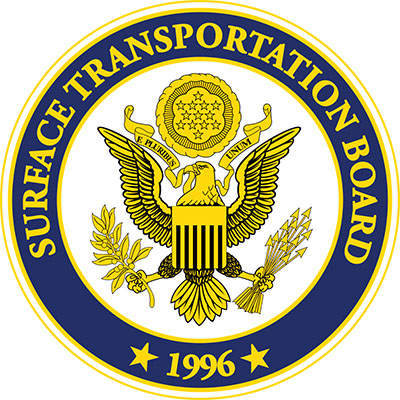STB issues follow-up letter to CSX over service-related concerns
In a letter to Class I railroad CSX CEO Hunter Harrison this week, leadership at the Department of Transportation’s Surface Transportation Board indicated they are still concerned about what it called “continued concerns over the widespread degradation of rail service across the CSX Transportation, Inc. system.”
In a letter to Class I railroad CSX CEO Hunter Harrison this week, leadership at the Department of Transportation’s Surface Transportation Board indicated they are still concerned about what it called “continued concerns over the widespread degradation of rail service across the CSX Transportation, Inc. system.”
This comes on the heels of a July 27 letter to Harrison from STB Acting Chairman Ann Begeman, STB Vice Chairman Daniel Elliott, and Board Member Deb Miller, whom also penned this week’s letter. The July 27 letter focused on a number of informal complaints from both CSX customers and railroad industry stakeholders in regards to various service issues, including: transit times increasing significantly and/or becoming unpredictable; loaded and empty railcars sitting for days at yards; switching operations becoming inconsistent and unreliable; car routings becoming circuitous and inefficient; CSX customer service being unable to provide meaningful assistance; and slowing train speed and increasing dwell time along with numbers of cars online.
These CSX service-related issues stem from the implementation of significant changes to CSX’ operating plan, including Harrison’s longstanding practice of precision railroading, which he deployed in previous top executives at both CP and CN. Precision railroading requires cargo to be ready when rail cars arrive for loading or risk being left behind.
Other operational initiatives cited by Harrison since he took over at CSX in March include idling around 550 locomotives and 25,000 railcars and converting hump yards to flat-switching yards that he maintains are more efficient.
STB leadership explained in their late July letter to Harrison that shippers have complained that CSX initiated changes to its operating plan without sufficient lead time and coordination efforts that would have allowed them to adjust their production cycles and supply chain logistics. They also cited a lack of communications on CSX’ behalf in regards to service changes.
The STB subsequently requested that CSX have weekly service calls with the STB’s Rail Customer and Public Assistance staff in order to “better understand the scope and magnitude of CSX’s railroad performance issues and its efforts to resolve these problems,” adding that on these calls “CSX should provide an overview of its operations including congestion at critical yards, availability of equipment and manpower, local spot and pull reports, and service to customer with critical needs.”
The Wall Street Journal reported around that time that CSX would provide the requested information and “respond fully and factually to the STB complaint.”
But the STB stressed this week that it is not apparent to the Board or invested stakeholders that there have not been tangible service improvements.
And it added that even though it previously requested that CSX’s senior management participate in weekly calls with CSX staff to review the state of the CSX network, as well as informal complaints submitted by rail shippers, it explained that much of the initial information offered up by CSX was in “narrative form without reference to railroad data or service metrics.”
STB said this made it difficult for it to assess the magnitude of CSX’s problems along with the pace of recovery, while rail service data submitted by CSX to the STB shows that it is still dealing with myriad service-related issues.
This has prompted the STB to request CSX to provide various performance indicators it said are vital in assessing CSX’s recovery efforts, including:
- train performance (on-time departure and on-time arrival);
- car connection performance (right car/right train);
- car ordering (weekly car orders versus order fulfillment percentage);
- gateway/interchange performance for key gateways (average daily cars interchanged inbound/outbound);
- last-mile performance (industry spot-and-pull percentages);
- equipment and personnel resources (number of locomotives in service, number of T&E personnel in service, and train re-crew rate); and
- weekly number of problem logs generated for car delay, missed switch, and bad order cars
STB concluded its letter to CSX’s Harrison by asking for a detailed schedule for CSX’s remaining implementation of its new operating plan, including key action items and milestones for the balance of 2017, by August 24.
In a survey based on feedback from nearly 60 rail shippers, Stephens Inc. found that on a scale of 1-10, the average ranking of CSX’s current service levels was 2.3, which was down from a previous reading of 6.6, while the rating for Norfolk Southern was 6.9.
As for when the CSX service issues may be resolved, the Stephens survey found that most shippers (60%) have not been provided with a timeline on when CSX’s service levels are expected to recover and for others, the message around the timing of a recovery ranged between several weeks (21%), several months (12%) and several quarters (7%).
“We also asked shippers if they believed these disruptions were temporary and would lead to a better service product over the long term,” Stephens noted. “In response, 51% said maybe, 42% said no and 7% said yes. In summary, shippers remain uncertain about both the near-term and longer-term progression of CSX’s service levels.”
Perhaps the most telling metric in the survey was the one focused on if shippers intended to move business away from CSX, with 70% saying yes, 23% saying maybe and 7% saying no. And on average, the respondents said that 34% of their current business with could shift away from CSX by the end of the year, it added.
“As it relates to who could pick up this market share, 48% said NSC, 39% said truck and 13% said other railroads / modes,” the firm wrote. “In summary, it is clear that the near- term market share shifts could be meaningful.”













